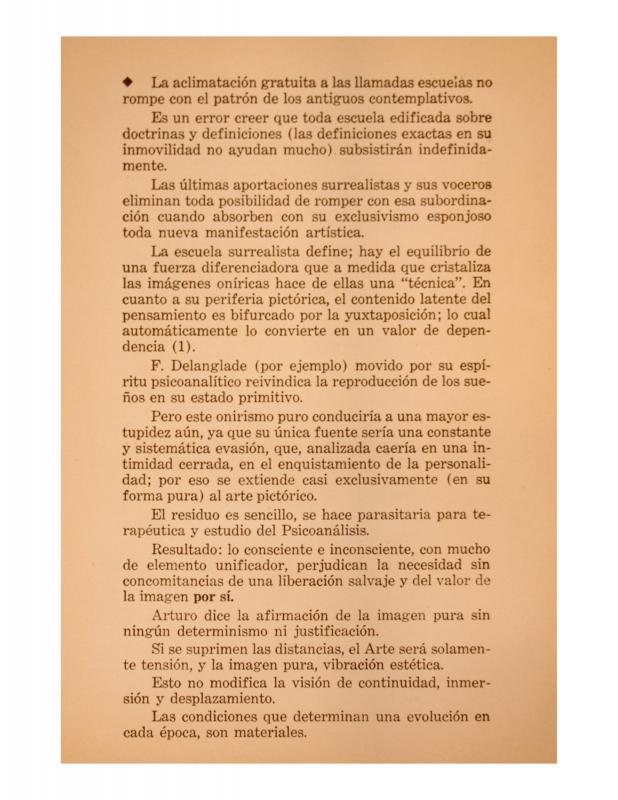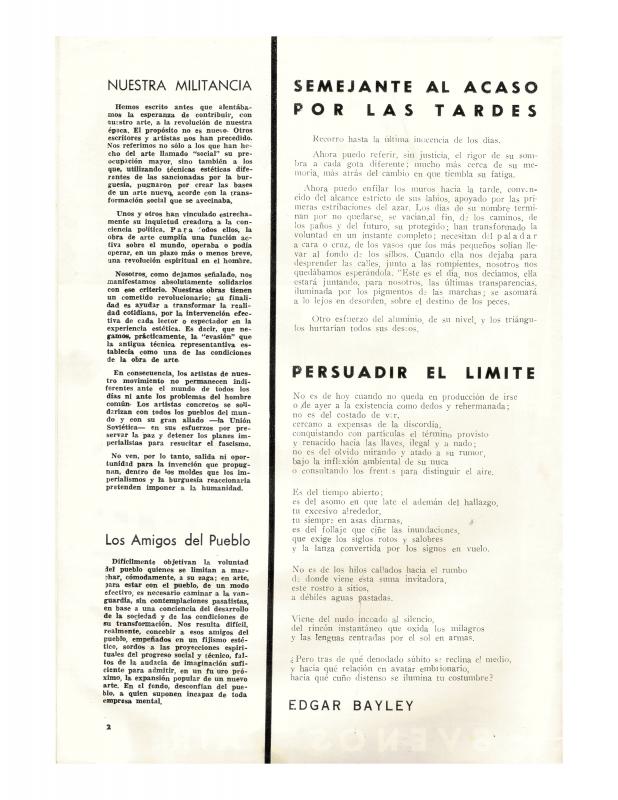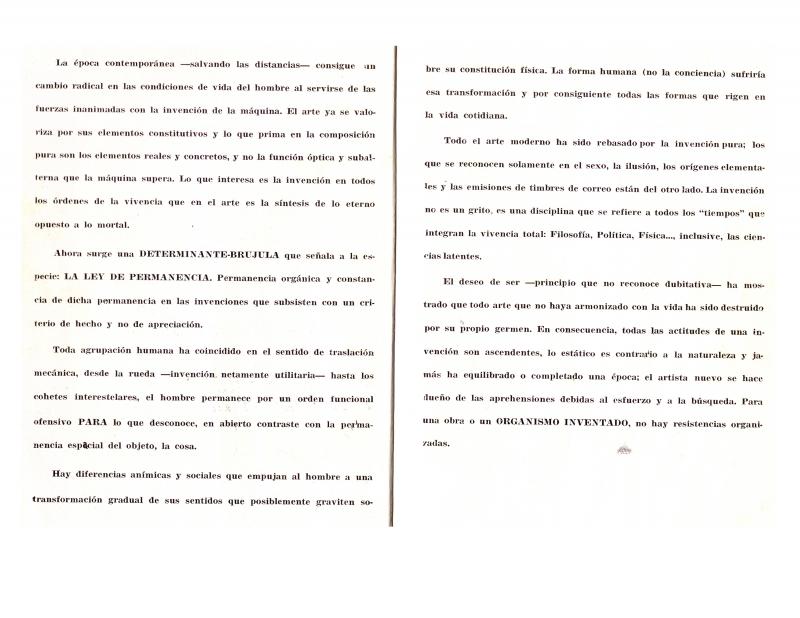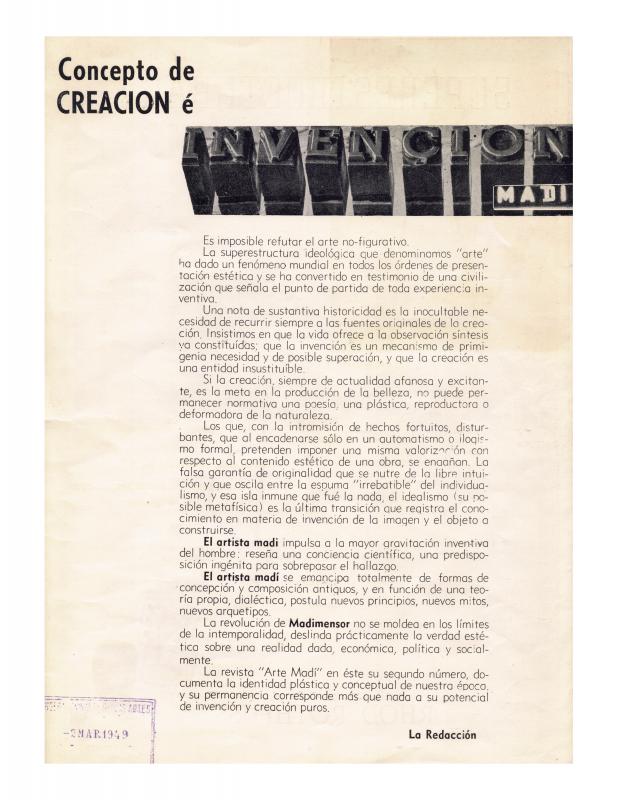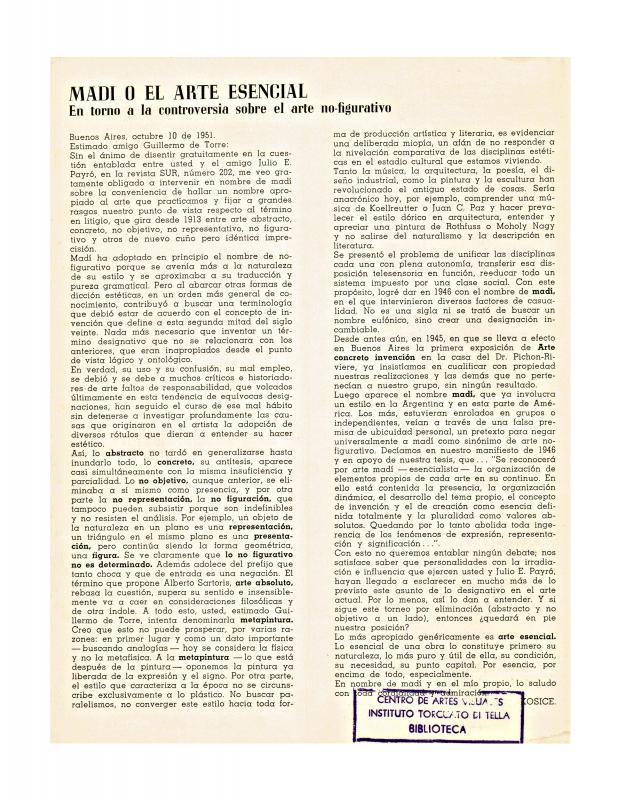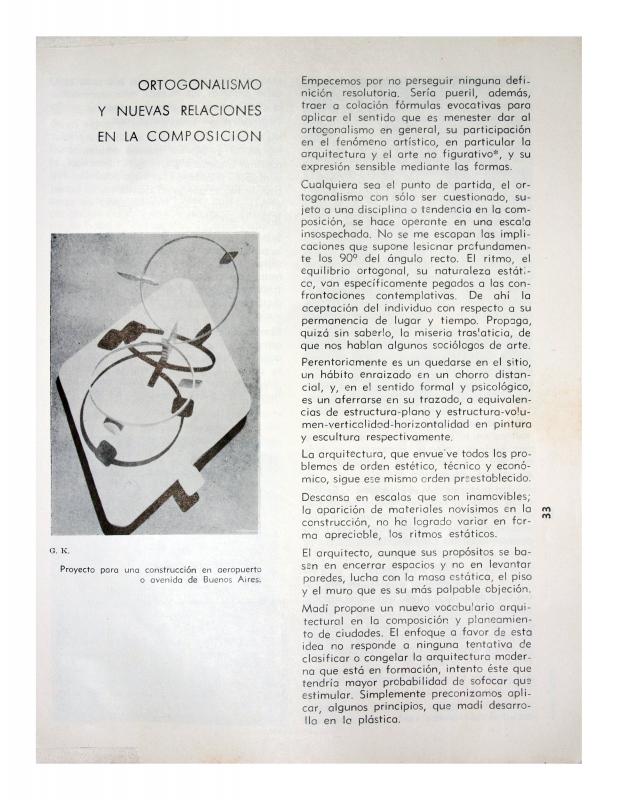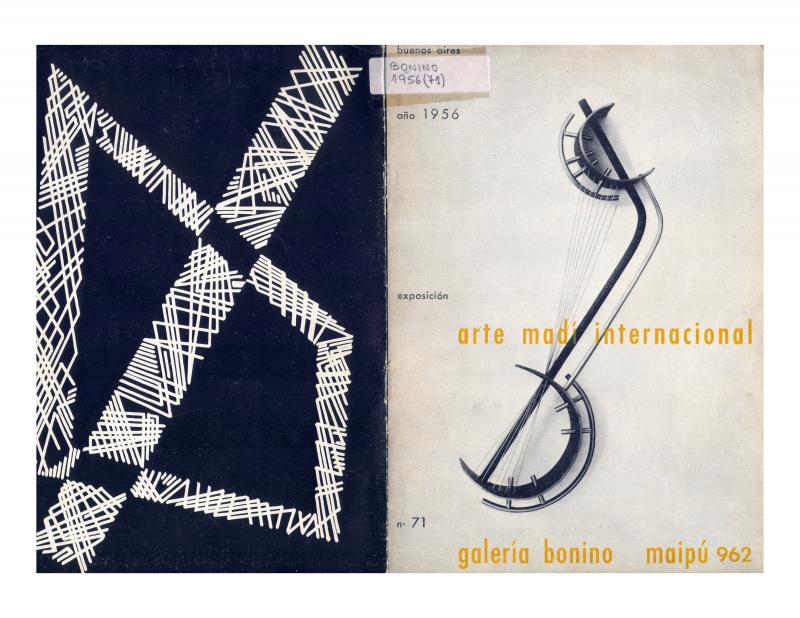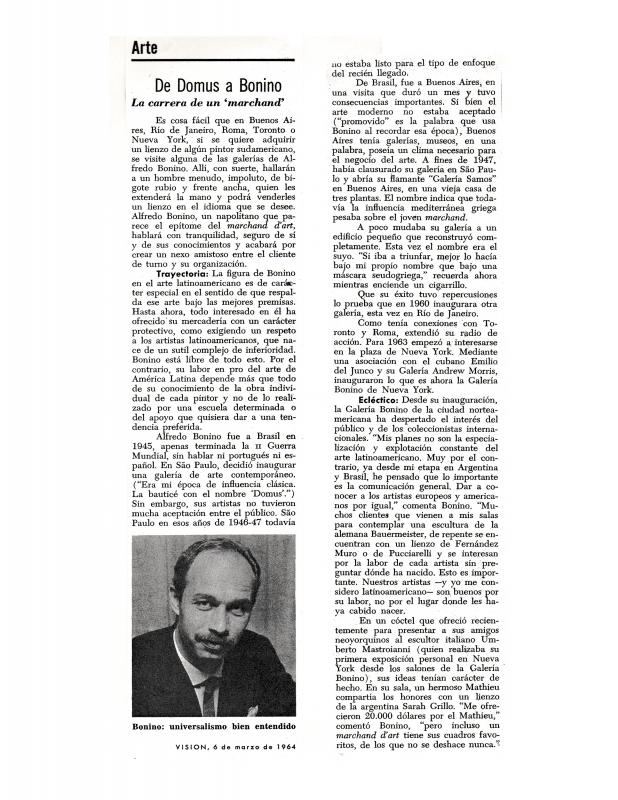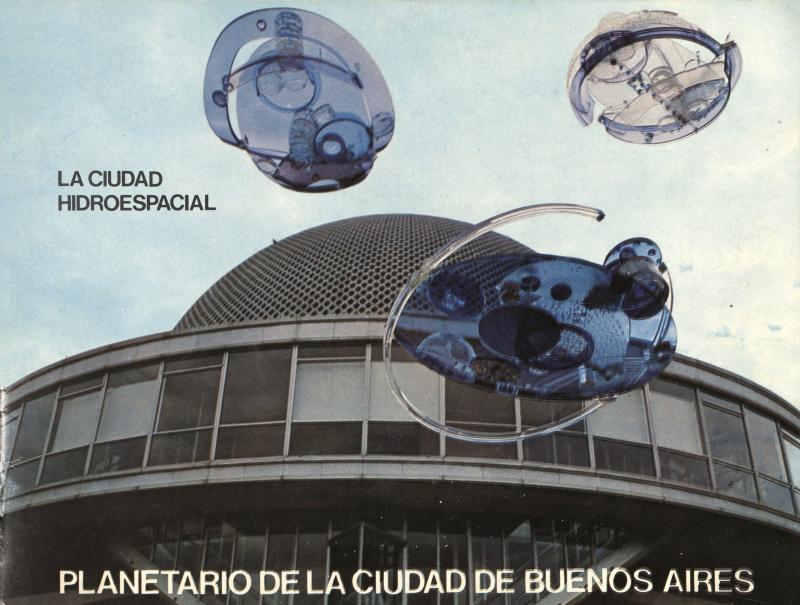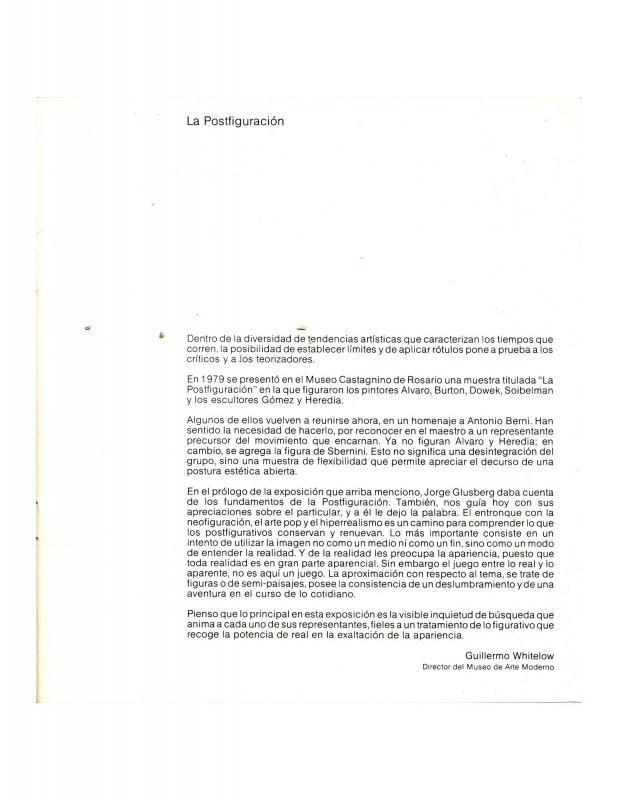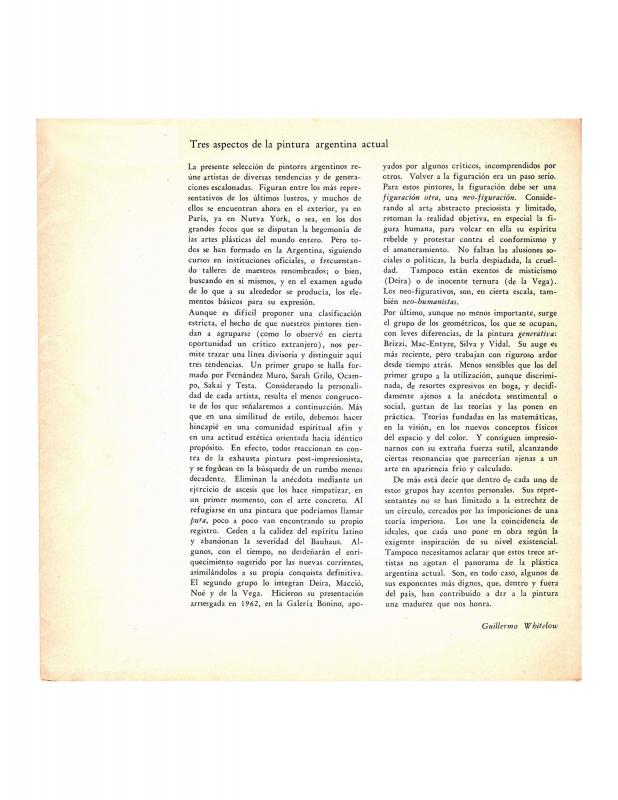Gyula Kosice (né Fernando Fallik, 1924) was born in Košice in present-day Slovakia, but has lived in Argentina since the age of four. A visual artist, poet, essayist, and visionary, he has been associated with some of the most influential Argentine avant-garde groups and movements. He served as a co-editor of Arturo magazine (1944) [For Kosice’s statement from Arturo, “La aclimatación artística gratuita a las llamadas escuelas…,” see the ICAA digital archive (doc. no. 729940).] and was a member of the association Arte Concreto—Invención (1945–46) (docs. no. 731671, 731530, 770319) and the Madí group (established in 1946) (docs. no. 743081, 731954, 731995, 731968, 742696, 732154, 743080). He is credited with the pioneering use of such materials as neon tubes, Plexiglas, water, and light, which positions him as one of the precursors of Kinetic art.
Kosice’s magnum opus, which he started in 1946, The Hydrospatial City [La ciudad hidroespacial] was first unveiled in 1971 in the important gallery Bonino in Buenos Aires [“Arte: de Domus a Bonino: La carrera de un marchand,” (doc. no. 766378)]. The project came together as an expansive installation consisting of a series of twenty three-dimensional acrylic maquettes of space habitats, light boxes, and “Descriptive Memories” [Memorias descriptivas permutables]—that is, diagrams and texts that outlined the living conditions the artist envisioned for the specific habitats. [For more information, see also (docs. no. 1274894, 1274878).]
The text in the exhibition brochure, reproduced here, was written by the Argentine art historian, critic, and curator Guillermo Whitelow (1923–2011), who since 1971 until 1983 served as the director of the National Museum of Fine Arts [Museo Nacional de Bellas Artes de Argentina] in Buenos Aires [For the examples of Whitelow’s other texts, see (docs. no. 780117, 747968, 763632).].The brochure contains also a quote by the prominent Argentine astrophysicist Carlos M. Varsavsky (1933–1983), attesting to the future viability of Kosice’s proposal.

